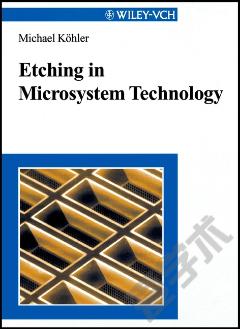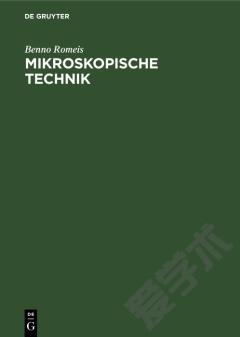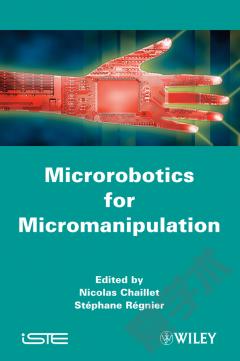Emerging Actuator Technologies —— A Micromechatronic Approach
----- 新兴执行器技术
Foreword. Preface. List of Figures. List of Tables. 1 Actuators in motion control systems: mechatronics. 1.1 What is an actuator? 1.2 Transducing materials as a basis for actuator design. 1.3 The role of the actuator in a control system: sensing, processing and acting. 1.4 What is mechatronics? Principles and biomimesis. 1.5 Concomitant actuation and sensing: smart structures. 1.6 Figures of merit of actuator technologies. 1.7 A classification of actuator technologies. 1.8 Emerging versus traditional actuator technologies. 1.9 Scope of the book: emerging actuators. 1.10 Other actuator technologies. 2 Piezoelectric actuators. 2.1 Piezoelectricity and piezoelectric materials. 2.2 Constitutive equations of piezoelectric materials. 2.3 Resonant piezoelectric actuators. 2.4 Nonresonant piezoelectric actuators.7 2.5 Control aspects of piezoelectric motors. 2.6 Figures of merit of piezoelectric actuators. 2.7 Applications. 3 Shape Memory Actuators (SMAs). 3.1 Shape memory alloys. 3.2 Design of shape memory actuators. 3.3 Control of SMAs. 3.4 Figures of merit of shape memory actuators. 3.5 Applications. 4 Electroactive polymer actuators (EAPs). 4.1 Principles. 4.2 Design issues. 4.3 Control of EAPs. 4.4 Figures of merit of EAPs. 4.5 Applications. 5 Magnetostrictive actuators (MSs). 5.1 Principles of magnetostriction. 5.2 Magnetostrictive materials: giant magnetostriction. 5.3 Design of magnetostrictive actuators. 5.4 Control of magnetostrictive actuators: vibration absorption. 5.5 Figures of merit of MS actuators. 5.6 Applications. 6 Electro- and magnetorheological actuators (ERFs, MRFs). 6.1 Active rheology: transducing materials. 6.2 Mechatronic design concepts. 6.3 Control of ERF and MRF. 6.4 Figures of merit of ER and MR devices. 6.5 Applications. 7 Summary, conclusions and outlook. 7.1 Brief summary. 7.2 Comparative position of emerging actuators. 7.3 Research trends and application trends. Bibliography. Index.
{{comment.content}}








 京公网安备 11010802027623号
京公网安备 11010802027623号